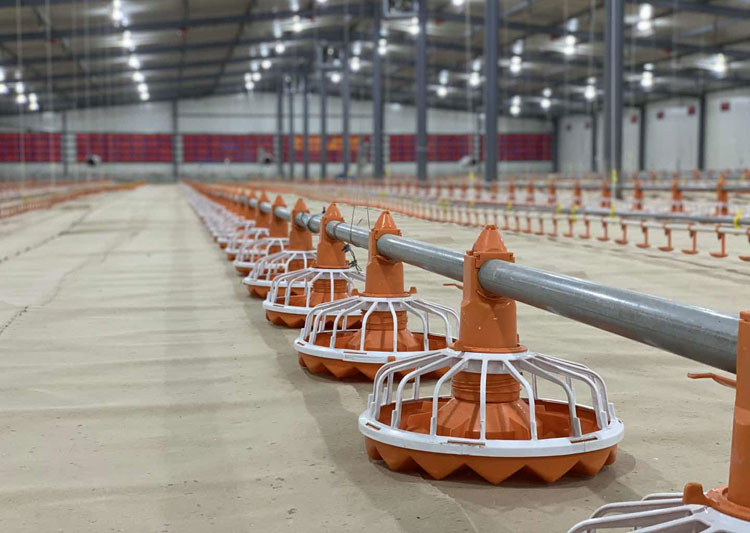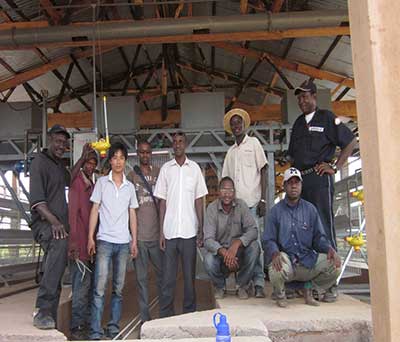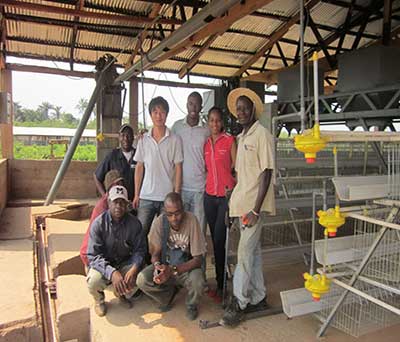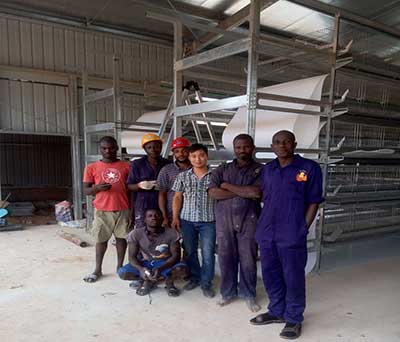Generally speaking, there are two ways to raise chickens, one is cage free chicken house and the other is battery cage raising. Cage free chickens and battery cage raising chickens can be subdivided. They each have their own advantages and disadvantages. The farming method is selected according to the specific conditions of the farm. Let’s take a look at the pros and cons of these two feeding methods.


Cage free poultry house
Cage free poultry house refers to chickens moving on a flat surface and there is not any cage for them. Cage free poultry house can be further divided into three types, slatted floor, deep litter house and mixed ground rearing. The stocking density of the cage free chicken house is small, the construction area is large, and the investment is relatively high. Free-ranging on the ground is also known as the ground leveling with thick litter. The thick litter is laid directly on the ground or cement floor, and chickens live on the litter. So far, most countries adopt this cage free house to raise broiler chickens.
Advantages: simple equipment requirements and less investment.
Disadvantages: The stocking density is low, and the chickens are exposed to feces, which is not conducive to disease control.

Cage free chicken house with slatted floor is raised for the chickens to leave the ground and move on the slatted floor made of plastic or other materials. A slatted floor of plastic mesh, metal mesh or plastic-coated mesh is laid on the net, and the floor is generally about 1.2 meters above the ground in order to facilitate the extraction of chicken manure.
Advantages: Chickens live on the slats, the feces fall under the net, and the chickens do not directly contact the feces, which is conducive to disease control, the stocking density is the highest, and 4.8 breeding chickens can be raised per square meter.
Disadvantages: The investment is relatively high, and it is relatively inconvenient to dig out chicken manure.

Mixed ground feeding is to divide the chicken house into two parts: the ground and the net, the ground part is bedding, and the net part is a slatted trellis structure. The ratio of the slatted trellis structure bed surface to the bedding floor is usually 6:4 or 2:1, and the layout of the house mainly adopts “two highs and one low” or “two lows and one high”. “Two high and one low” is the most widely used breeding method for broiler breeders at home and abroad. Foreign egg breeders also mainly adopt this breeding method, that is, laying slats along the wall, half of the slats are laid against the front wall, and the other half against the back wall. The egg-laying box is on the outer edge of the slats, and the row is perpendicular to the long axis of the house. One end is placed on the edge of the slats, and the other end is suspended above the bedding floor, which is convenient for chickens to enter and leave the egg-laying box and reduces the floor space.
Advantages: The egg production and egg fertilization rate of chickens are higher than that of full slat rearing.
Disadvantages: The stocking density is slightly lower, and only 4.3 broiler breeders can be raised per square meter.


Battery cage for raising chickens
Battery cage is raising chickens in wire-welded cages. According to different types of chicken breeds, sex and age, there are different types of battery cages, including baby chick cages, broiler chicken cages, layer chicken cages, breeder chicken cages and so on.
Battery cage for raising chickens advantages
- Increase the stocking density. The battery cage density is more than 3 times higher than the cage free chicken house, and the laying hens can be raised more than 17 per square meter.
- Save feed. Chickens are kept in cages, the amount of exercise is reduced, the energy consumption is less, and the waste of material is reduced.
- Chickens do not come into contact with feces, which is conducive to the epidemic prevention of chickens.
- The eggs are relatively clean, which can eliminate eggs outside the nest.
- There is no litter problem.
Battery cage for raising chickens disadvantages
- The egg production is lower than that of cage free chicken house.
- Relatively increased investment.
- The proportion of blood-spotted eggs is high, the egg quality is slightly poor, and the qualified rate of breeding eggs is low.
- Cage chickens are prone to sudden death syndrome, which affects the survival rate and egg-laying performance of chickens.












